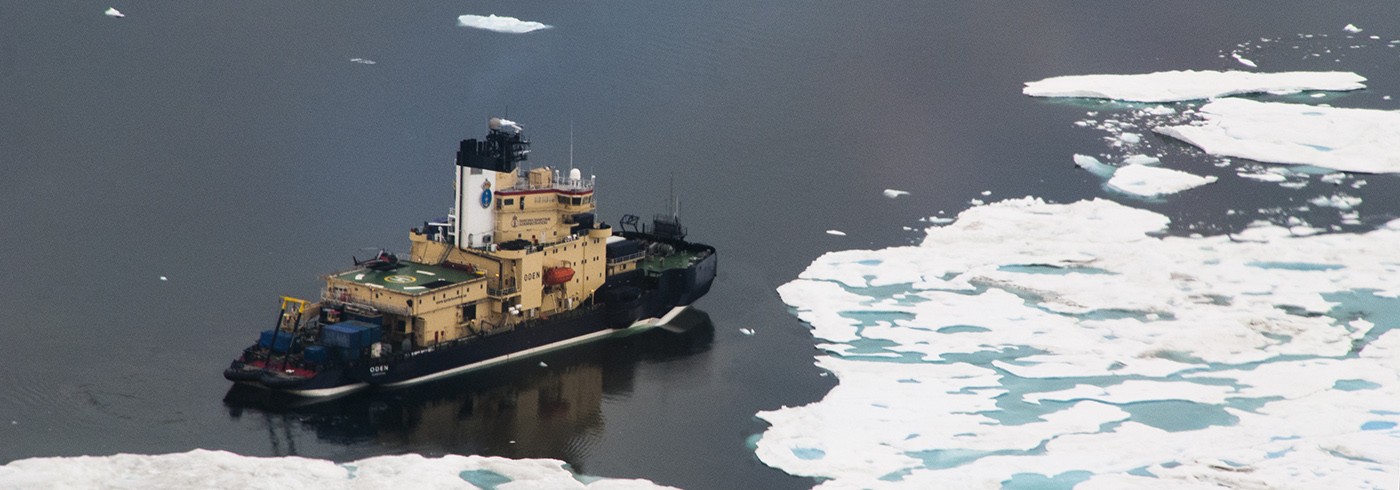
The marginal ice zone. Photo: Michael Lawler
On Wednesday, August 1, at about 3 PM Swedish time, we set out from Longyearbyen with relatively calm seas, headed north. About a day and a half after beginning our journey, we reached the marginal ice zone, where ice begins to appear on the ocean surface. We are surrounded by floating pieces several meters wide, but not very thick. This is relatively easy work for the icebreaker Oden, but already the travel is significantly bumpier. The whole ship shudders when we go through a thick patch of ice. These are productive waters, and some watchers on board have already spotted seals and polar bears.
Our first measurement station was here, in the marginal ice zone. We conducted a 24-hr intensive observation period, focused on the composition of atmospheric aerosols (suspended solid or liquid particles). This station will serve as a point of reference to compare with what we find in the High Arctic, near the pole, where we will spend 5 weeks drifting with the ice. One of the key questions of our expedition is how atmospheric aerosols are formed in the High Arctic, which has unique oceanographic conditions. Unlike most of the global oceans, there are no breaking waves to make particles out of sea water (sea spray aerosol), because waves are prevented from forming by the sea ice. Some gases emitted from the ocean can react in the atmosphere to form new particles, but the known sources of these are small so far north.
For the next few days we will sail northward, approaching the pole, in search of a suitable spot to set up our main observation stations for the summer.

